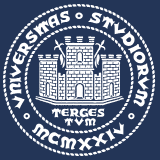Introduction
The University of Trieste is a public research university located in Trieste, Friuli-Venezia Giulia, northeastern Italy. It is one of the important higher education institutions in the region.
Overview
Number of students and faculty: In 2024, the school has a total of approximately 16,677 students, including 1,250 international students; 671 faculty, including 26 international faculty.
Majors: Covering 10 major academic fields including chemistry and pharmaceutical sciences, economics, business and mathematical statistics, engineering and architecture, humanities, legal language interpretation and translation, life sciences, mathematics and earth sciences, medicine, surgery and health sciences, physics, politics and social sciences, providing a wealth of undergraduate, master and doctoral programs.
History and establishment time
The school originated from the Levotel Higher Commercial School founded in 1877. At that time, the development of commercial activities in Trieste increased the demand for business skills. On August 8, 1924, according to Royal Decree No. 1338, the Higher Commercial School was transformed into the University of Economic and Commercial Studies. In 1938, the establishment of the Faculty of Law made it a fully-fledged university. In the following decades, the school gradually established another ten colleges. After the university reform in 2010, the school redesigned its institutional structure and assigned the functions of teaching organization and scientific activity management to 10 departments.
School Strength
Faculty: It has 671 academic faculty members and 143 researchers, including 26 international faculty members. They have profound academic attainments and rich teaching and research experience in their respective professional fields. They can provide students with high-quality education and guidance, and cultivate students' professional qualities and innovative abilities.
Research level: The school has strong scientific research strength, participated in many international and domestic scientific research projects, and achieved remarkable scientific research results in many disciplines. The city of Trieste, where it is located, is the center of many research institutions, such as the Trieste Synchrotron Light Laboratory and the Regional Science and Technology Park. The school has established cooperative relations with these institutions to jointly promote the development of scientific research. In addition, the school has also carried out extensive international cooperation with universities and scientific research institutions in many countries and regions, which has improved the school's scientific research level and international influence.
International Cooperation: Actively carry out international cooperation and exchanges, and have established cooperation agreements with universities and scientific research institutions around the world, involving projects such as teacher-student exchanges and joint research. Through these collaborations, students have the opportunity to study abroad and broaden their international horizons, and teachers can also participate in international cooperative research projects to enhance the school's international reputation and academic level.
Nature of the institution
Public university.
Educational philosophy
The educational philosophy of the University of Trieste emphasizes the combination of scientific research and higher education, with the main goal of promoting Italy's cultural, social and economic development. It also pays attention to the close connection between teaching, scientific research and medical services, and is committed to cultivating high-quality talents with innovative spirit and practical ability, and promoting the dissemination and innovation of knowledge.
Key laboratories and disciplines
Key laboratories: The school is adjacent to and has cooperation with many important research institutions, such as the Trieste Synchrotron Light Laboratory, the International Center for Theoretical Physics, the National Institute of Oceanography, the International Center for Genetic Engineering and Biotechnology, etc. These institutions provide strong support and advanced experimental conditions for the school's scientific research.
Advantageous disciplines: Outstanding performance in disciplines such as space science, physics, life sciences and medical sciences. In the 2022-2023 USNews World University Subject Rankings, Space Science ranks 90th, Physics ranks 223rd, Heart and Cardiovascular System ranks 225th, Chemistry ranks 281st, Clinical Medicine ranks 522nd, etc.
Department
According to the major reorganization in 2010, the school is divided into 10 departments, namely, Medicine, Surgery and Health Sciences Clinical Department, Department of Physics, Department of Engineering and Architecture, Department of Mathematics and Earth Sciences, Department of Chemistry and Pharmaceutical Sciences, Department of Life Sciences, Department of Economics, Business, Mathematics and Statistical Sciences, Department of Law, Language, Interpretation and Translation Studies, Department of Political and Social Sciences, Department of Humanities.
Ranking
2024 Times Higher Education World University Rankings: ranked 501-600.
2023 USNews World Best University Rankings: ranked 416th.
Expenses
Tuition fees vary by academic major, but are the same for domestic and international students. Tuition fees for English-taught master's programs are generally between 300 euros and 1,000 euros / Years, such as production engineering and management, neuroscience, data science and scientific computing, etc.
Campus environment
Geographic location: The main campus is located in the European Square and Sgoletto Hill in Trieste. The campus architecture is unique and full of European classical atmosphere. The city is located on the northeastern border of Italy, close to Slovenia, with unique Central European cultural characteristics, beautiful surrounding environment, convenient transportation, providing students with a good learning and living environment.
Teaching facilities: The school has modern teaching facilities, including teaching buildings, laboratories, libraries, etc. The library has a rich collection of books, providing sufficient resource support for students' study and research. The laboratory is equipped with advanced instruments and equipment to meet the needs of scientific research and teaching in various disciplines.
Living facilities: The living facilities around the school are complete, including student dormitories, canteens, supermarkets, etc., providing students with convenient living conditions. In addition, the school also has sports facilities to encourage students to actively participate in physical exercise and enrich their extracurricular life.
-
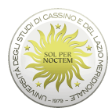
University of Cassino and Southern Lazio
-

University of Campania Luigi Vanvitelli
-
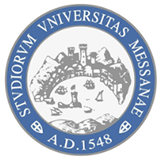
University of Messina
-
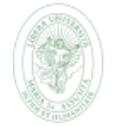
Libera Universita degli Studi Maria SS. Assunta di Roma (LUMSA)
-
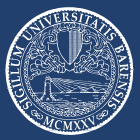
University of Bari Aldo Moro
-
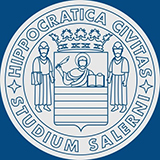
University of Salerno
-
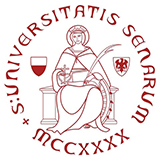
University of Siena
-
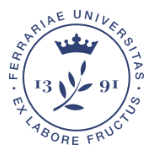
University of Ferrara
-
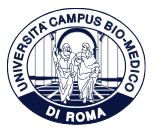
Campus Bio-Medico University of Rome
-

University of Genoa
-

Mesoamerican University
-

Istmo University
-

Mariano Galvez University of Guatemala
-

Regional University of Guatemala
-

Galileo University
-

Francisco Marroquín University
-

Rafael Landívar University
-

University of the Valley of Guatemala
-

University of San Carlos of Guatemala
-

Technological Institute of Tlaxcala Plateau
-

Golfo University
-

Technological University of South Sonora
-

Technological University of Huejotzingo
-

Tizimín Institute of Technology
-

Chilpancingo Institute of Technology

